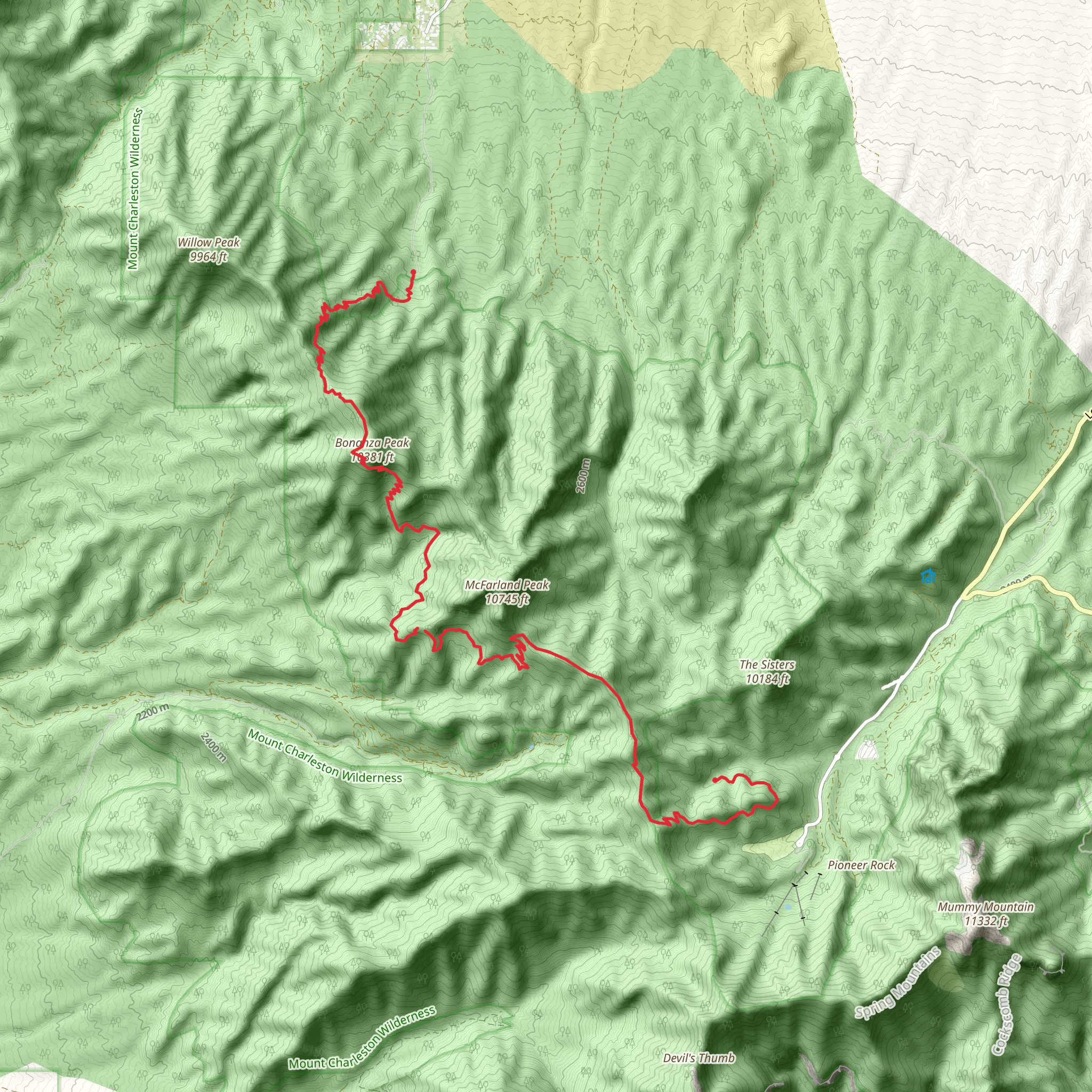Download
Preview
Add to list
More
24.3 km
~2 days
1763 m
Multi-Day
“Embark on the historical and rugged Bonanza Trail for an epic adventure through Nevada's scenic and wild backcountry.”
The Bonanza Trail is a challenging point-to-point hike located near Clark County, Nevada, offering an adventurous trek through the Spring Mountains National Recreation Area. Spanning approximately 24 kilometers (15 miles), this trail presents an elevation gain of around 1700 meters (5577 feet), which places it in the category of extra difficult hikes. It's a demanding route that requires good physical condition and proper preparation.
Getting to the Trailhead To reach the trailhead, hikers can drive to a location near Cold Creek, Nevada. From Las Vegas, take US-95 N towards Reno for about 30 miles, then turn left onto Cold Creek Road and continue for about 16 miles. The road will lead you to the small community of Cold Creek, and from there, the trailhead is accessible via a dirt road that may require a high-clearance vehicle. There is no direct public transportation to the trailhead, so a personal vehicle or a taxi service is necessary.
Navigating the Trail Hikers should prepare to navigate the trail with a reliable GPS tool. HiiKER is an excellent resource for trail maps and navigation, ensuring that you stay on the correct path throughout your journey. The trail is not always well-marked, so having a digital map on hand is crucial.
Trail Experience The Bonanza Trail offers a mix of challenging ascents, serene forested areas, and panoramic views. As you begin your hike, the initial few kilometers will introduce you to the local flora, including bristlecone pines and junipers. The ascent is steady, and you'll quickly gain elevation, offering views of the surrounding mountains and valleys.
Historical Significance The area is steeped in history, with the trail itself named after the mining boom of the late 1800s and early 1900s. The Spring Mountains were once the center of a mining frenzy, with the most notable commodity being silver. Hikers will encounter remnants of this era, including old mines and ghost towns, which serve as a reminder of the region's rich past.
Wildlife and Nature As you progress along the trail, keep an eye out for the diverse wildlife that inhabits the area. It's not uncommon to spot mule deer, wild horses, and even the elusive bighorn sheep. Birdwatchers will also appreciate the variety of bird species that can be observed, especially in the early morning hours.
Landmarks and Scenery One of the most significant landmarks you'll encounter is McFarland Peak, a prominent feature in the Spring Mountains. The trail doesn't summit McFarland Peak, but it offers stunning views of it, especially as you approach the halfway point of the hike. Additionally, the trail provides vistas of the Las Vegas Valley and, on clear days, the distant Death Valley.
Preparation and Safety Given the trail's difficulty and remote nature, it's essential to be well-prepared. Carry plenty of water—at least 4 liters per person—as there are no reliable water sources along the route. Dress in layers, as temperatures can fluctuate, and be prepared for sudden weather changes. It's also advisable to inform someone of your hiking plans and expected return time.
Seasonal Considerations The best time to hike the Bonanza Trail is from late spring to early fall. Snow and ice can make the trail treacherous in winter, and the summer heat can be intense. Always check the weather forecast before setting out and start early in the day to avoid the midday sun.
Remember, the Bonanza Trail is a backcountry experience that requires respect for the environment and adequate preparation. With the right planning and a sense of adventure, hikers will find this trail to be a rewarding challenge.
What to expect?
Activity types
Comments and Reviews
User comments, reviews and discussions about the Bonanza Trail, Nevada.
4.71
average rating out of 5
21 rating(s)

